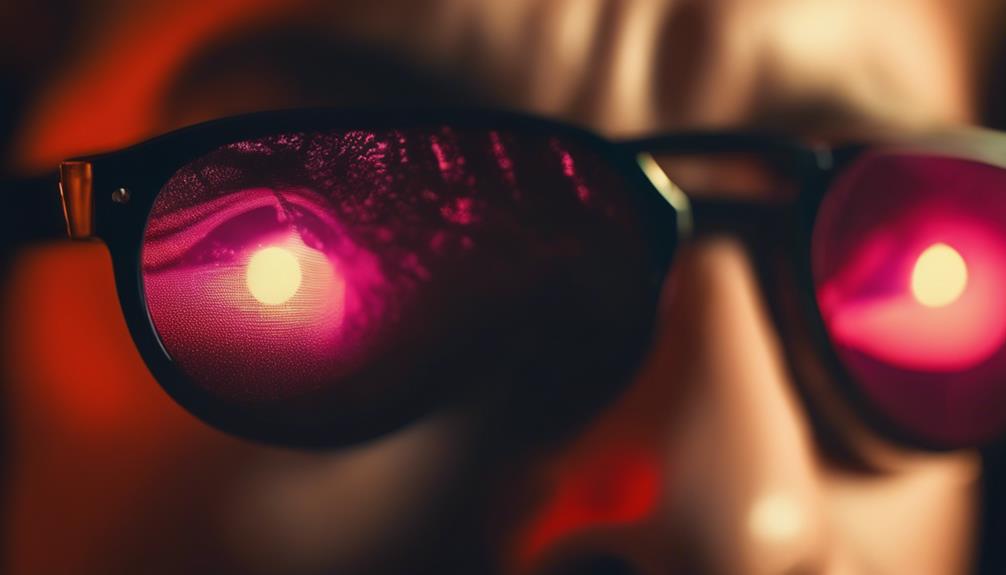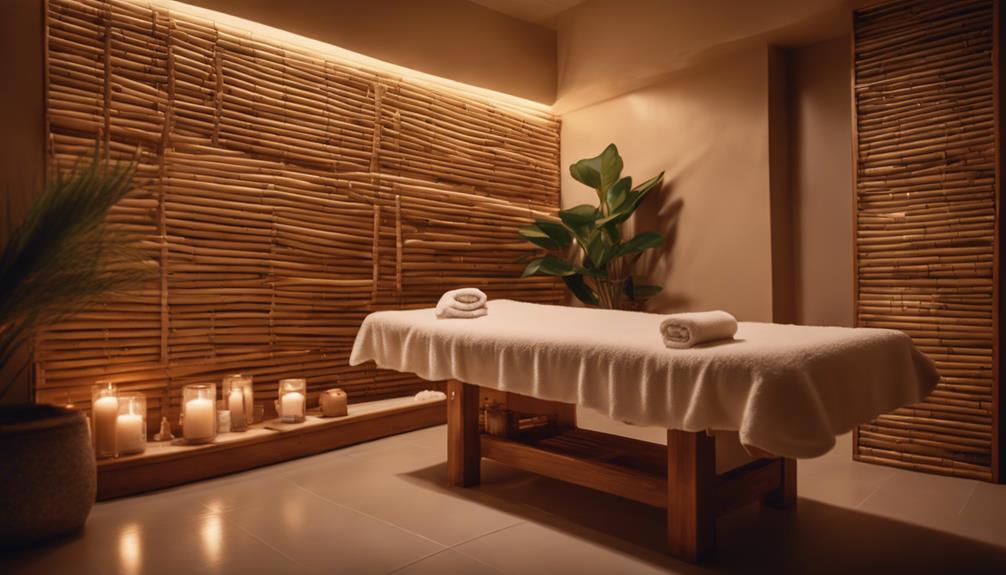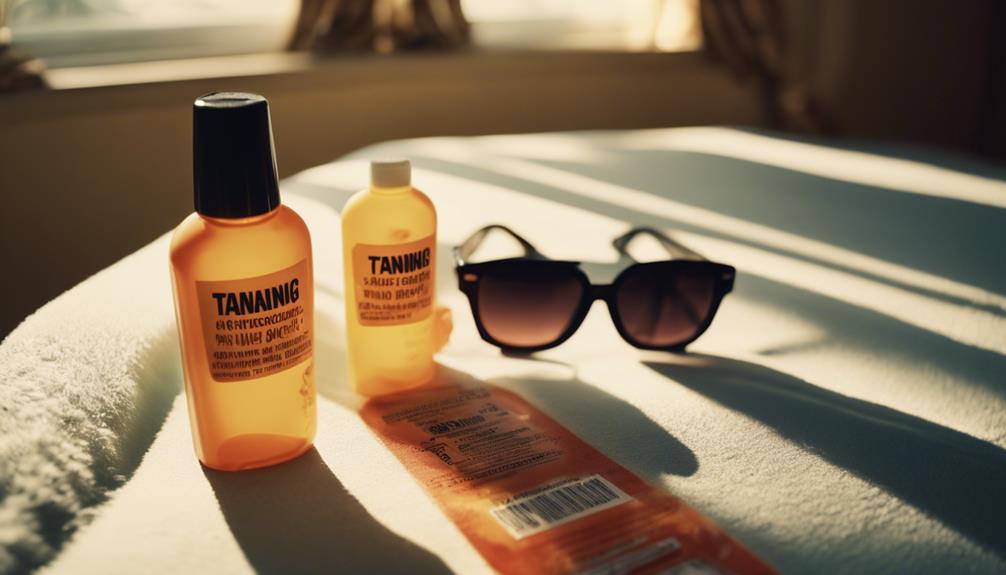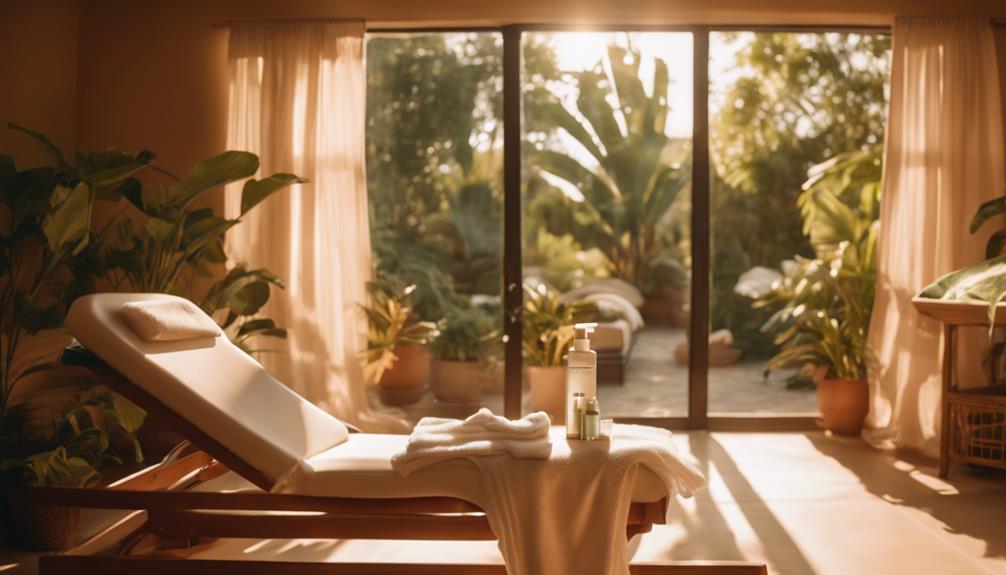Tanning beds expose you to harmful UV radiation, dramatically raising your risk for skin cancers like melanoma. They also speed up skin aging, leading to premature wrinkles and an uneven texture. Not only can tanning beds damage your eyes, causing serious conditions like cataracts, but they can also create psychological dependencies. You may feel the urge to tan for a bronzed look, often ignoring the risks. It's essential to evaluate safer alternatives, like self-tanning products, that won't jeopardize your health. There's more to uncover about the dangers and safer choices that can keep your skin healthy.
Key Takeaways
- Tanning beds significantly increase the risk of skin cancers, including melanoma and nonmelanoma types, due to high UV radiation exposure.
- UV radiation from tanning beds causes premature skin aging, leading to wrinkles, leathery texture, and visible age spots.
- The intense UV rays can cause serious eye damage, including cataracts and macular degeneration, if protective eyewear is not used.
- Psychological dependence on tanning can develop, leading to body image issues, anxiety, and low self-esteem despite the health risks.
Health Risks of Tanning Beds
Tanning beds greatly increase your risk of developing skin cancers, including melanoma and nonmelanoma types, due to their high levels of UV radiation.
When you use tanning beds, you expose your skin to concentrated UV rays, which are the primary cause of skin cancers like basal cell carcinoma and squamous cell carcinoma.
Starting indoor tanning at a young age considerably raises these risks, making awareness even more vital. Regular skin checks are essential for catching potential issues early, and knowing skin safety practices can help mitigate these dangers.
Remember, tanning beds don't provide any Vitamin D benefits, and frequent use can lead to skin lesions and a higher chance of melanoma.
Prioritize your skin health by avoiding tanning beds altogether.
Understanding UV Radiation
UV radiation from tanning beds is categorized into two main types—UV-A and UV-B— with UV-B being the more harmful and carcinogenic form.
While UV-A rays penetrate deep into the skin and contribute to aging, UV-B rays are responsible for sunburn and play a significant role in developing skin cancers.
Tanning beds emit higher levels of UV radiation than natural sunlight, which intensifies the risk of skin damage, particularly for younger skin.
This increased exposure can lead to long-term consequences, including premature aging and a heightened likelihood of skin cancer.
Understanding these UV radiation types is essential for making informed choices about your skin health and avoiding the dangerous allure of tanning beds.
Prioritize your skin's safety by staying informed.
Eye Damage From Tanning

Frequent exposure to the intense UV radiation from tanning beds can lead to serious eye damage, including conditions like cataracts and macular degeneration. You might think it's just your skin at risk, but your eyes need protection too. Wearing protective goggles is vital during tanning sessions to shield your eyes from harmful rays.
| Eye Condition | Description | Prevention |
|---|---|---|
| Cataracts | Clouding of the lens of the eye | Use protective eyewear |
| Macular Degeneration | Damage to the retina | Limit tanning sessions |
| Corneal Damage | Injury to the outer layer of the eye | Always wear goggles |
Prioritizing eye safety can save your vision and guarantee a healthier tanning experience. Don't overlook the importance of protecting your eyes!
Premature Aging Effects
Indoor tanning accelerates the aging process of your skin, leading to premature wrinkles and a leathery texture. The UV rays emitted by tanning beds break down collagen, which is essential for maintaining your skin's elasticity.
As a result, you may notice fine lines forming sooner than expected. Plus, age spots can appear, making your skin look older. If you already have stretch marks, tanning can worsen their visibility, altering your skin's overall appearance.
Over time, these effects accumulate, leaving you with significant skin damage that's hard to reverse. Protecting your skin from indoor tanning not only helps maintain your youthful glow but also reduces the risk of severe long-term aging consequences.
Consider healthier alternatives to achieve that desired tan without sacrificing your skin's health.
Psychological Impacts of Tanning

Tanning can create a psychological dependence, leading individuals to seek out the artificial glow despite the known health risks. The desire to maintain a bronzed appearance often overshadows concerns about skin cancer and premature aging.
You might find yourself feeling more confident with a tan, but this reliance on tanning beds can spiral into an addiction. Research shows that this behavior may be linked to body image issues, anxiety, and low self-esteem.
You may even experience withdrawal symptoms when you can't tan, further complicating your mental health. Recognizing these psychological impacts is vital in understanding the broader implications of tanning beyond its physical risks.
It's important to reflect on your motivations and consider healthier alternatives for boosting your confidence.
Safe Tanning Practices
Understanding the psychological impacts of tanning can help you make more informed choices about safer tanning practices that prioritize your skin health. To minimize risks, always apply SPF 30+ before indoor tanning sessions and use protective goggles to shield your eyes. Limit your tanning sessions to avoid burns and skin damage; setting timers can help regulate session duration.
Here's a quick reference table for safe tanning practices:
| Practice | Description | Importance |
|---|---|---|
| Use SPF 30+ | Apply before tanning | Protects against UV damage |
| Limit session duration | Set timers for tanning sessions | Prevents burns and damage |
| Wear protective goggles | Shield eyes from harmful UV rays | Reduces risk of eye damage |
| Consider alternatives | Explore self-tanning products | Safer than UV tanning |
Alternative Tanning Options

Exploring alternative tanning options can help you achieve a sun-kissed glow without the harmful effects of UV exposure. Self-tanning products, like lotions, sprays, and foams, allow you to develop a natural-looking tan without risking skin damage. Look for products with dihydroxyacetone (DHA), which reacts with your skin's surface for a bronzed effect.
For a quicker option, consider spray tans at salons, which provide an even finish. If you prefer a more natural approach, bronzing powders and tinted moisturizers can enhance your skin tone safely.
Always remember to exfoliate before application to guarantee an even result. By choosing these alternatives, you can maintain your skin's health while enjoying that desirable glow.
Frequently Asked Questions
How Do Tanning Beds Affect Skin Types Differently?
Tanning beds affect skin types differently due to varying melanin levels. Fair-skinned individuals often burn faster, while darker skin may tan more easily, but all skin types face increased risks like premature aging and skin cancer.
Can Tanning Beds Cause Allergic Reactions in Some Individuals?
Did you know about 10% of tanning bed users experience allergic reactions? If you're considering tanning beds, be aware that some individuals can develop skin rashes or sensitivities due to UV exposure and tanning bed products.
What Are the Legal Age Restrictions for Using Tanning Beds?
Most places require you to be at least 18 to use tanning beds without parental consent. Some states have stricter regulations, so check local laws to guarantee you're following the rules regarding indoor tanning.
Do Indoor Tanning Facilities Provide Adequate Safety Information?
You know what they say, 'an ounce of prevention is worth a pound of cure.' Indoor tanning facilities often provide basic safety info, but it's essential you research thoroughly to understand the real risks involved.
How Does Indoor Tanning Impact Overall Skin Health Long-Term?
Indoor tanning considerably harms your skin health long-term. You risk premature aging, increased wrinkles, and skin cancers. Regular exposure damages collagen and leads to leathery skin, so consider safer alternatives for your tanning needs.
Conclusion
In the quest for that coveted glow, don't let tanning beds fool you with their fleeting allure. The lurking dangers—damaged skin, distressed eyes, and premature aging—are far from worth it.
Instead, consider safer, smarter solutions for sun-kissed skin without the harmful consequences. By opting for alternative options, you can achieve a beautiful bronzed look while protecting your health.
So, skip the risky rays and shine safely with savvy choices that celebrate your skin's true beauty!








